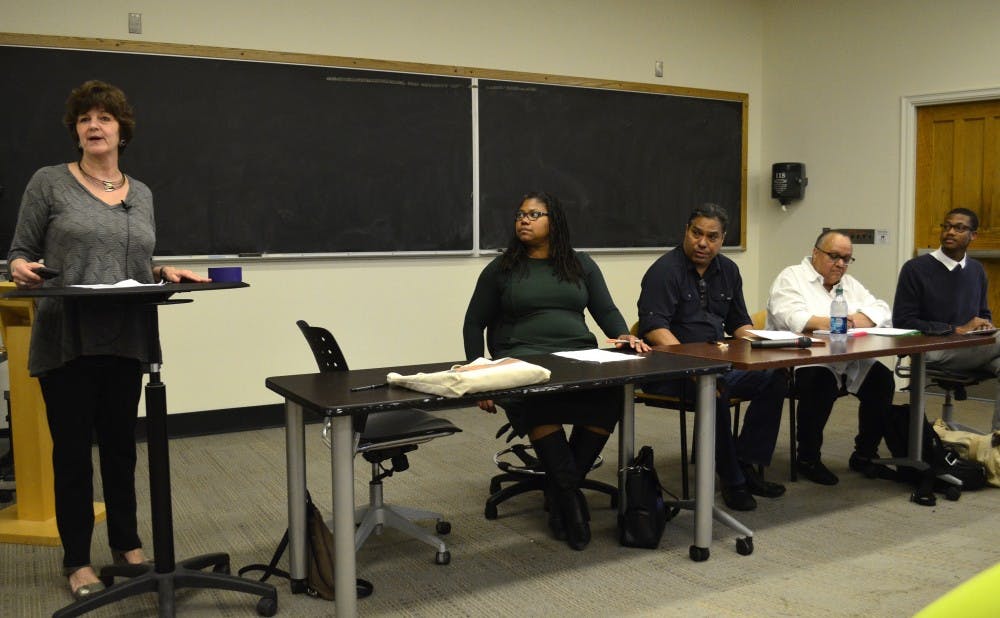Faculty, students and community members gathered Tuesday to discuss the history of lynching and racism, and how that history can inform future dialogues about race on campus.
Speakers in the town hall meeting—which was sponsored by the history department and was standing-room only—emphasized that the noose found hanging outside the Bryan Center last week must be part of a larger conversation about race relations on campus. Members of the faculty panel spoke about the historical significance of the symbol, and tangible steps the University can take to improve relations on campus.
“Denying race is not the goal—the utter elimination of white supremacy is the goal,” said Adriane Lentz-Smith, the history department’s director of undergraduate studies. “One need not be colorblind to respect difference.”
The noose was discovered outside the Bryan Center early last Wednesday morning. Several campus-wide protests and discussions were organized within 24 hours, and by Thursday afternoon, the student responsible had been identified. He or she is no longer on campus and awaiting further disciplinary action from the University.
Though many students reacted with anger, shock and hurt, some—particularly on social media—suggested the noose was a joke or was not intended as a racist symbol.
Nancy MacLean, William H. Chafe professor of history, focused on the necessity of placing the noose in its historical context in order to understand its significance as a “powerful symbol of dominance and oppression.”
She noted that between 1882 and 1968, there were 4,742 Americans who were lynched—3,450 of them black—and from 1890 to 1917, some two to three black southerners were hanged, burned at the stake or quietly murdered each week.
MacLean said elite whites allowed, and even relied upon, these systematic murders to order to enforce the system of white supremacy on which their privilege depended.
“We need to reject the feeble, pathetic excuse that such acts could possibly be just a joke,” MacLean said. “Minimizing these kinds of acts in this kind of way is an insulting evasion. To imagine that a noose in particular might be a joke suggests and unwillingness to see through the eyes of others, to look past one’s own viewpoint of privileged insulation.”
Eduardo Bonilla-Silva, chair of the Sociology department, spoke about the noose as just one part of a “climate of hostility” faced by students, faculty and staff of color. He noted that microaggressions faced by people of color on Duke’s campus everyday include being asked by Duke University Police Department officers for identification, being told they are here because of preferential treatment and being told racist actions are just jokes.
“Duke is not a neutral racial space,” Bonilla-Silva said. “It’s a HWCU—a historically white college and university. Duke’s culture oozes whiteness.”
He told students that because racism at Duke is systematic, they must “think big” with the demands—to come up with systemic solutions to make the campus safer, more inclusive and more multicultural.
In the forum following the discussion, students and faculty touched on possible solutions—including increasing the representation of engaged black faculty, mandating anti-oppression training for incoming freshmen and better incorporating dialogues about race in the curriculum.
Correction: A previous edition of this article said MacLean had cited a statistic that two to three black southerners were murdered weekly from 1890 to 1970. The time frame is 1890 to 1917. The Chronicle regrets the error. The article was also modified to reflect Bonilla-Silva's official title.
Get The Chronicle straight to your inbox
Signup for our weekly newsletter. Cancel at any time.

